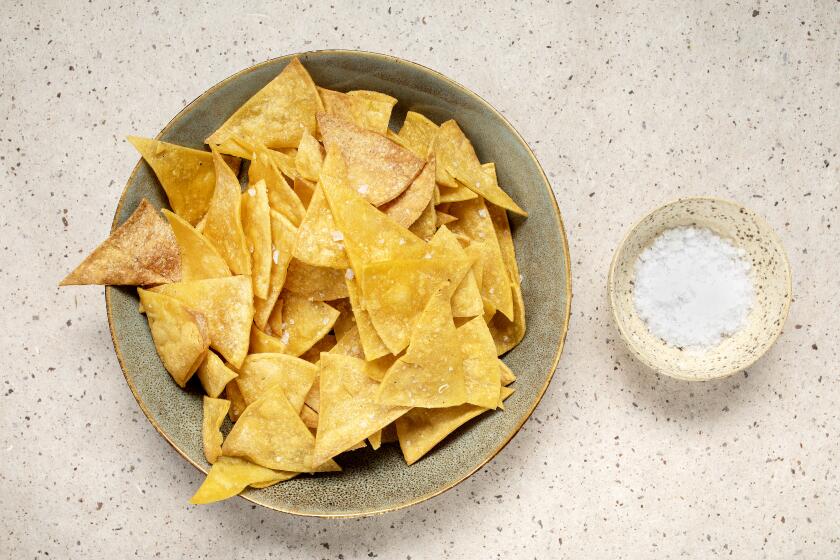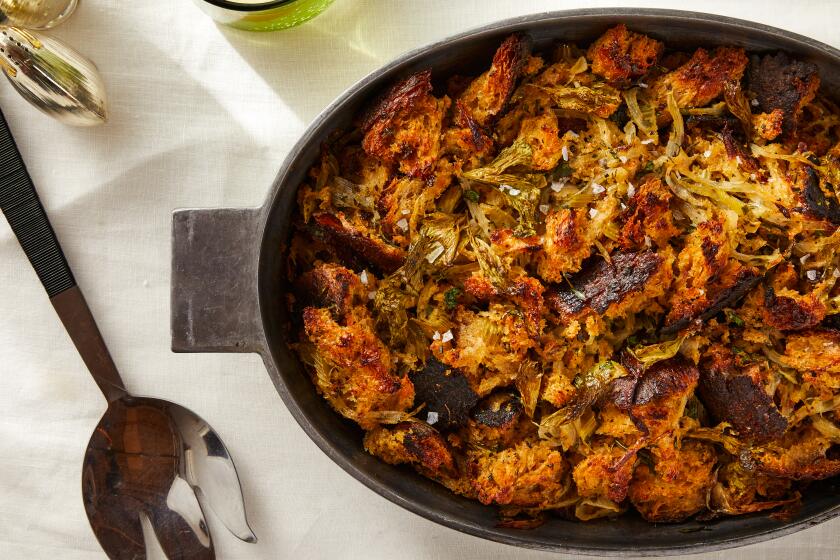Bagels
What I am about to explain could get me barred from the Lincoln and Holland tunnels or any other routes into Manhattan. But as a baker who loves bagels and all the things that can go on them, I am duty-bound to dispel urban legends and to tell you that anyone can make great bagels at home, no matter where you live.
In fact, after making these at home, if you do happen to be on Manhattan’s Upper West Side and decide to stop in at H&H for old time’s sake to pick up a bagel or six, I think you will discover that your memory of their singular greatness is only in your mind.
Here’s one of the secrets: It is not about the water, it is all about long, slow, cold fermentation. Knowing this one fact could change your baking life forever.
Bagels are about the simplest of all breads to make. A little flour, water, salt, yeast and barley malt syrup (or honey) is all it takes. The secret ingredient is time. Any decent bagel shop knows this and uses an overnight method to stretch out the fermentation, allowing chemical and biological processes to work on the dough for at least 12 hours, releasing all sorts of subtle flavors trapped in the flour.
Though bagel shops often use a type of high-protein flour not available to home cooks to achieve that distinctively chewy texture, the fact is that unbleached bread flour from any major supplier (General Mills, Pillsbury, King Arthur, Bob’s Red Mill, Hodgson Mill, etc.) will do the trick.
Unlike baguettes and other European hearth breads that use a high percentage of water to achieve a soft, open-holed texture, bagels are made with a much lower percentage of water, producing a stiff dough that can stand up to being dunked in boiling water before going into the oven for the final bake.
This boiling step, more than any other, defines the uniqueness of the bagel. A number of bagel companies now skip the boiling (really, more like poaching) and use steam-injected ovens, but this produces a different sort of product, kind of a hybrid bagel/French bread texture that some people (but not all) like.
A die-hard bagel freak like me, or my friends, however, refuses to call this product a bagel but rather think of it as a knockoff, like a fake Prada or Gucci bag.
Finally, the one distinctive ingredient that bagels usually feature is barley malt. Though this seems like an exotic, hard-to-find product, it is available at many markets, usually labeled barley malt syrup and shelved with other syrups. It looks like dark honey or molasses. The syrup is made from sprouted and then cooked barley, a process that releases a lot of maltose sugar from the grain.
If you cannot find it, substitute an equal amount of honey. Your bagels might not have the malty flavor of memory, but they will still be better than almost any bagel you can buy. This type of malt syrup is not enzymatic, as some malt powders are (known as diastatic malt because the diastase enzymes from the barley are still active), but is considered non-diastatic (the enzymes are denatured, or destroyed, by the heat that turns the syrup dark). Malt syrup, by the way, is strictly a flavor enhancer, not a dough conditioner.
You now know more about bagels than 99% of the people who eat them. If you follow the steps in this recipe (a great activity, by the way, to do with kids 6 and older), you will soon be making bagels that rival any memory in your bagel hall of fame. Expect your New York friends to show up at your door.
In the bowl of an electric mixer or food processor or by hand, mix the flour, 2 teaspoons salt, the yeast, barley malt syrup and 1 cup plus 2 tablespoons water until the ingredients form a stiff, coarse ball of dough (about 3 minutes if mixing by hand or in a mixer; or 1 minute in a food processor). If necessary, add a little more water. Let the dough rest 5 minutes.
Knead the dough on a lightly floured surface until the dough feels stiff yet supple, with a satiny, slightly tacky feel, 2 to 3 minutes. If the dough seems too soft or too tacky, sprinkle over just enough flour as needed.
Place the dough in a lightly oiled bowl, cover tightly with plastic wrap, and place it in the refrigerator for at least 1 hour and up to several hours. Keep in mind that the bagels must be shaped before proofing overnight.
When ready to shape the bagels, line a baking sheet with lightly greased parchment paper or a silicone baking mat.
Remove the dough from the refrigerator and divide it into 6 to 8 equal pieces. Form each piece into a loose, round ball by rolling it on a clean, dry work surface with a cupped hand; do not use any flour on the surface. If the dough slides around and won’t ball up, wipe the work surface with a damp paper towel and try again -- the slight amount of moisture will provide enough “bite” for the dough to form a ball. When each piece has been formed into a ball, you are ready to shape the bagels.
Using your hands and a fair amount of pressure, roll each dough ball into a “rope” 8 to 10 inches long. (Moisten the work surface with a damp paper towel, if necessary, to get the necessary bite or friction). Slightly taper the rope at the ends so that they are thinner than the middle. Place one end of the dough between your thumb and forefinger and wrap it around your hand until the ends overlap in your palm; they should overlap by about 2 inches. Squeeze the overlapping ends together and then press the joined ends into the work surface, rolling them back and forth a few times until they are completely sealed.
Remove the dough from your hand and squeeze as necessary to even out the thickness so that there is a 2-inch hole in the center. Place the bagel on the prepared sheet pan. Repeat with the other pieces. Lightly wipe the bagels with oil, cover with plastic wrap and place in the refrigerator overnight.
Remove the bagels from the refrigerator 90 minutes before you plan to bake them. Fill a large stockpot with 3 quarts of water (be sure the water is at least 4 inches deep), cover with a lid, and slowly bring the water to a boil. When it comes to a boil, add the remaining teaspoon of salt and 1 teaspoon of baking soda, reduce the heat and simmer with the lid on.
Thirty minutes before baking, heat the oven to 500 degrees.
Test the bagels by placing one in a bowl of cold water. If it sinks and doesn’t float to the surface, return it to the sheet, wait 15 minutes and then test it again. When one bagel passes the float test, they are ready for the pot.
Gently lift each bagel and drop it into the simmering water. Add as many as will comfortably fit in the pot. After 1 minute, use a slotted spoon to flip each bagel over. Poach for an extra 30 seconds. Using the slotted spoon, remove each bagel and return it to the lined baking sheet. Continue until all the bagels have been poached. Generously sprinkle each bagel with a topping, except for cinnamon sugar (see note below).
Place the baking sheet in the oven and reduce the heat to 450 degrees. Bake for 8 minutes and then rotate the sheet (if using two sheets, also switch their positions). Check the underside of the bagels. If they are getting too dark, place another sheet under the baking sheet (i.e., double-pan it). Bake until the bagels are golden brown, an additional 8 to 12 minutes. Remove from the oven and transfer the bagels to a rack for at least 30 minutes before serving.
Get our Cooking newsletter.
Your roundup of inspiring recipes and kitchen tricks.
You may occasionally receive promotional content from the Los Angeles Times.















